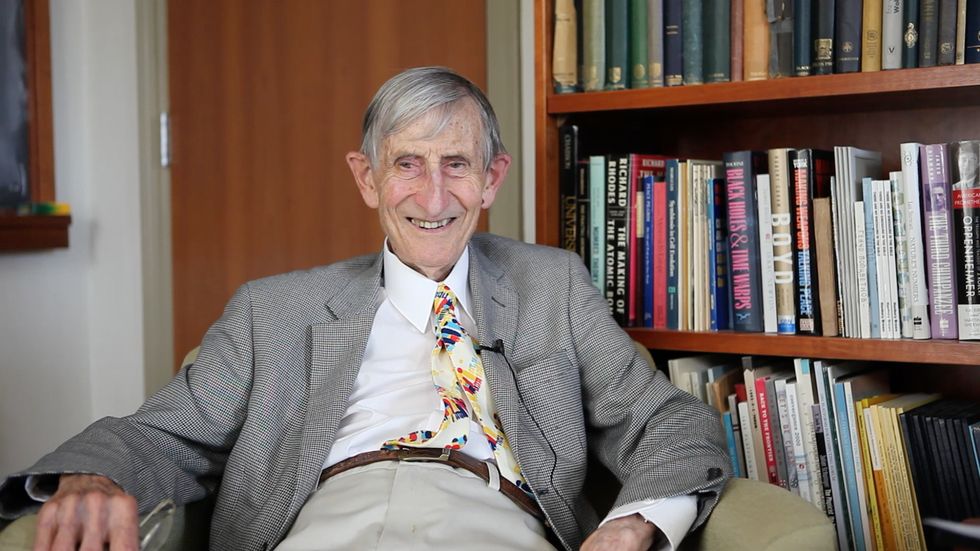When we started making a list of visionaries to interview for our special issue commemorating IEEE Spectrum’s 50th anniversary, Freeman Dyson was one of the first names to come up.
The celebrated physicist’s career got off to a quick start in the late 1940s, with a critical contribution to the then-nascent field of quantum electrodynamics. Since then it’s ranged far and wide, touching on subjects as varied as solid-state physics, biology, and climate change.
But for many, Dyson is known for his most speculative ideas. He is the man for whom the Dyson sphere is named—a hypothetical structure, built by an alien civilization, that could capture most or all the energy emitted by a star (and leave a telltale excess of infrared light that could be picked up by our telescopes). Dyson was also one of the key players on Project Orion, which ran from 1958 to 1963 and which conceived of a spacecraft, powered by a series of controlled nuclear explosions, that could have potentially carried humans to Saturn by 1970.
We wanted to see what this bold and imaginative thinker might have to say about humanity’s next 50 years. So we asked him.
Check out the Interactive Version of Freeman Dyson Predicts the Future, which allows you to jump to different sections by clicking on the subject headings.



